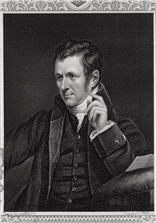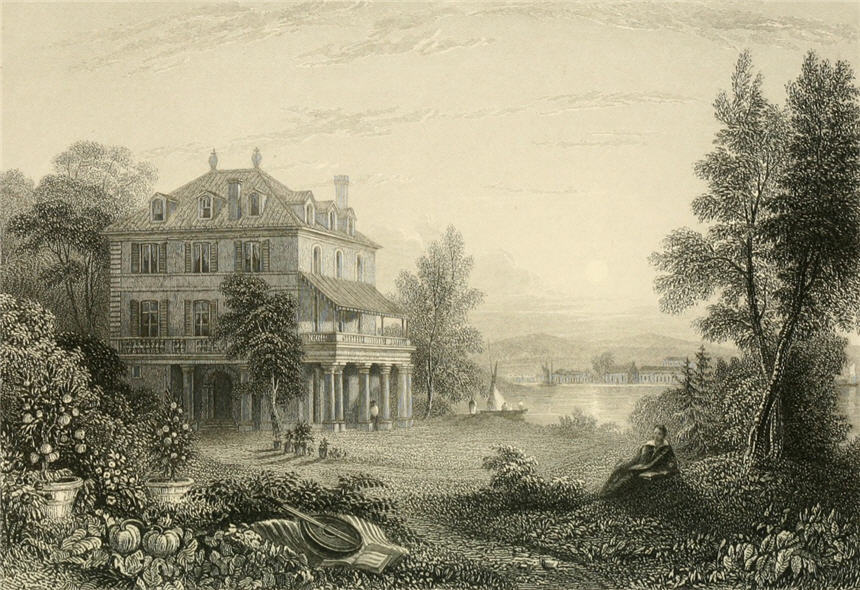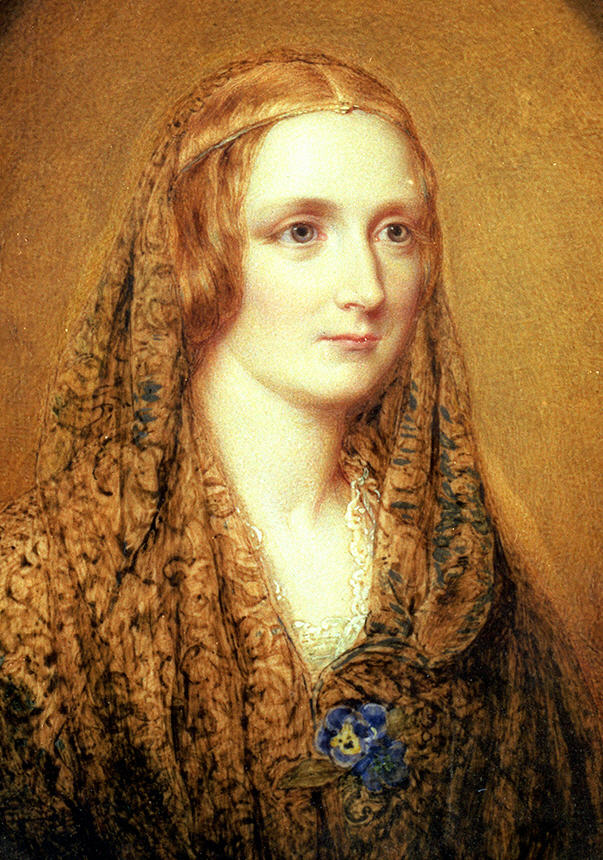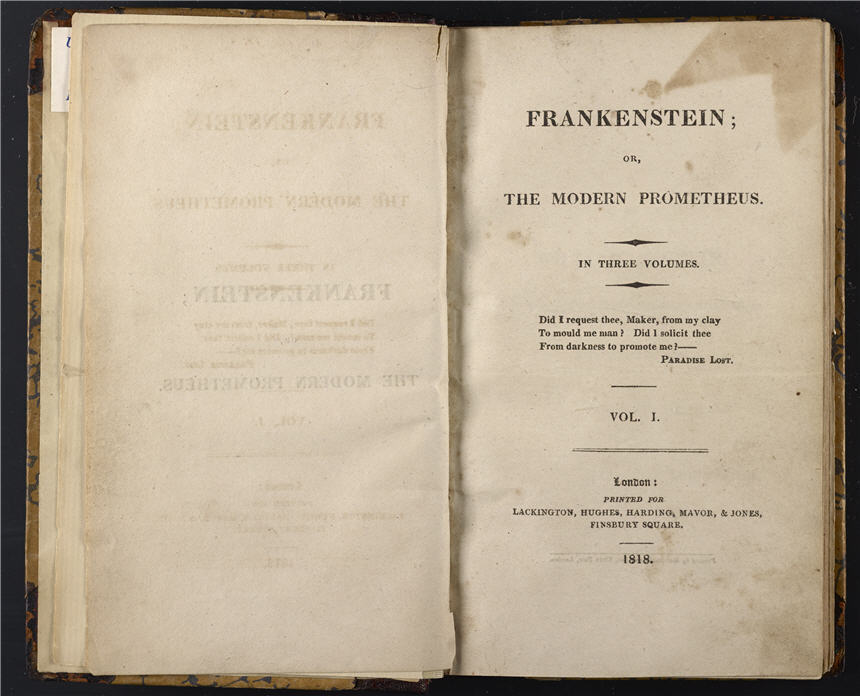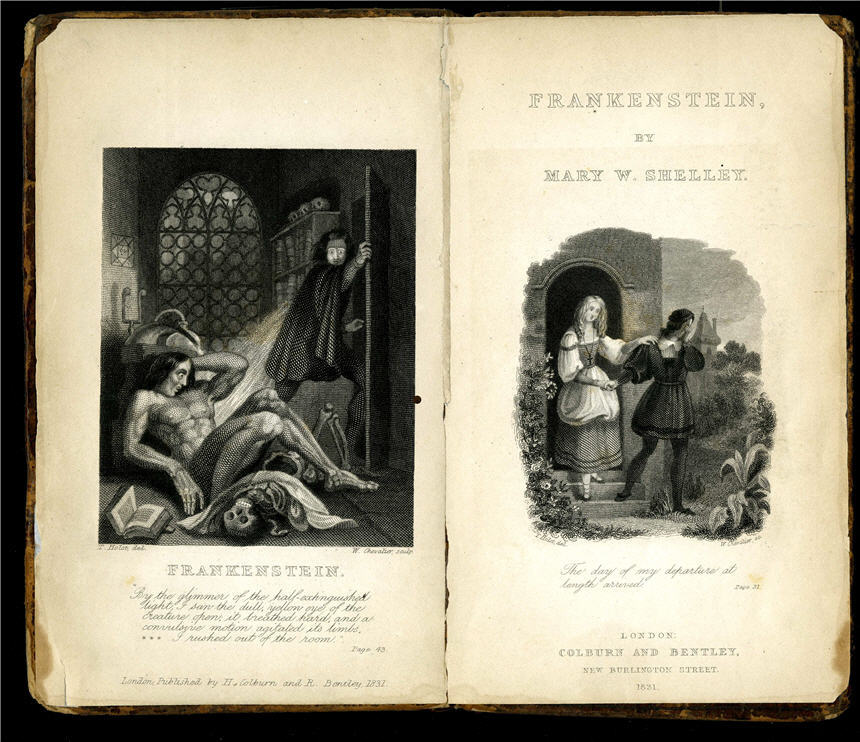In 1816, Mary Godwin and her lover, the poet Percy Bysshe Shelley (whom she married later that year), summered in Switzerland near the shores of Lake Geneva. Together they visited with Lord Byron, who was staying in a villa nearby, where they avidly discussed literature, politics, and science. One night, Byron suggested that they take part in a competition to write a terrifying tale.
-
Diodati, The Residence of Lord Byron, 1833
Artist: William Purser (ca. 1790—ca. 1852)
Engraver: Edward Finden (1791—1857)
Courtesy HathiTrust
In the summer of 1816, Lord Byron and his physician John William Polidori lived in the Villa Diodati on Lake Geneva.
Portrait of Mary Shelley, ca. 1851–1893
Artist: Reginald Easton (1807–1893)
Courtesy The Bodleian Library, University of Oxford
Mary Shelley was only 18 years old when she was inspired by a “waking dream” in which she envisioned “the hideous phantasm of a man stretched out, and then, on the working of some powerful engine, show signs of life.” Thus she began writing Frankenstein.
Frankenstein; or, The Modern Prometheus, 1818
Author: Mary Shelley (1797–1851)
Courtesy Singer-Mendenhall Collection, Annenberg Rare Book and Manuscript Library, University of Pennsylvania
The first edition of Frankenstein appeared anonymously. Although some critics like novelist Sir Walter Scott praised the vigor and originality of the novel, some were far more critical of “the tissue of horrible and disgusting absurdity” in the book, and its failure to provide a useful moral lesson.
Mary Shelley remains best known today for this compelling story about a creature fashioned from parts of other bodies, but she also wrote five other novels, a novella, travel books, biographies, short stories, essays, and poetry.
Frankenstein; or, The Modern Prometheus, 1831
Author: Mary Shelley (1797–1851)
Courtesy Singer-Mendenhall Collection, Annenberg Rare Book and Manuscript Library, University of Pennsylvania
For the 1831 edition of Frankenstein, Mary Shelley wrote a new preface and made several changes in the text. She continued to express great affection for her “hideous progeny,” which she described as the “offspring of happy days.” before the deaths of her children, William and Clara, and her husband, Percy Shelley.



